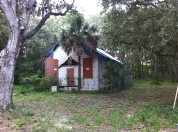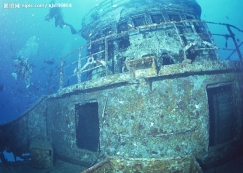ћвƒњƒЏ»Ё
°Њћвƒњ°њѕ¬ЌЉ «—І–£”Ґ”пЌш’Њµƒ–¬‘ц≤њЈ÷јЄƒњ£ђЌш’ЊЄЇ‘р»ЋMr. BlackЊЌіЋѕтЌђ—І√«’ч—ѓ“вЉы°£Љў»зƒг «јої™£ђ«лƒгЄщЊЁ“‘ѕ¬ћб Њ”√”Ґ”пЄшMr. Black–і“їЈвµз„”” Љю°£

÷ч“™ƒЏ»Ё∞ьј®£Ї
1. ƒгљ®“й‘цЉ”µƒ“їЄцјЄƒњЉ∞јн”…£ђ
2. ƒгґ‘”Ґ”пЌш’Њµƒљ®“й°£
„Ґ“в£Ї
1. і э100„у”“£ї
2. њ™ЌЈЇЌљбќ≤ЉЇЄш≥ц£ђ≤їЉ∆»л„№і э£ї
3. њ…“‘ µ±‘цЉ”ѕЄљЏ£ђ“‘ є––ќƒЅђєб£ї
≤ќњЉі їг£ЇјЄƒњcolumn
Dear Mr. Black,
I am glad that there will be some new columns in our English website. _______________________________________________________________________________
_______________________________________________________________________________
_______________________________________________________________________________
_______________________________________________________________________________
_______________________________________________________________________________
_______________________________________________________________________________
_______________________________________________________________________________
_______________________________________________________________________________
_______________________________________________________________________________
_______________________________________________________________________________
Best wishes.
Yours,
Li Hua
°Њір∞Є°њ
Dear Mr. Black,
I am glad that there will be some new columns in our English website. Of the four columns, I have higher expectation to Today°ѓs World. As you know, today°ѓs world is a changing world. We will become outdated if we turn a deaf ear to it. From the new column Today°ѓs World we can learn what°ѓs going on around the world. It can also enrich our knowledge of the latest science and technology.
As to my suggestion, I would appreciate it if there are more English-learning columns in the website. Most of my classmates are eager to learn English well, but short of learning chances after class. I hope our website can do something about it.
Best wishes.
Yours sincerely,
Li Hua
°Њљвќц°њ±Њќƒ ф”ЏћбЄўја„чќƒ£ђ“™µг“—Єш≥ц£ђ–і„ч ±≤ї“™÷рЊдЈ≠“л£ђњ… µ±‘цЉ”ѕЄљЏ“‘ є––ќƒЅђєбЌђ ±“™∞—Ћщћб Њµƒµг–і»Ђ£ђ”пЊдЌ®Ћ≥£ђЌђ ±“™„Ґ“в„Љ»Ј‘Ћ”√ ±ћђ°Ґ”пћђ°Ґ…ѕѕ¬ќƒ“вЋЉЅђєб£ђЈыЇѕ¬яЉ≠єЎѕµ°£ЄщЊЁЊд“в µ± є”√≤ҐЅ–Ѕђі £ђЌђ ±“≤“™Їѕјн‘Ћ”√ЄяЉґі їгЇЌЄяЉґЊд„”ќ™ќƒ’¬‘ц…Ђћн≤ °£„Ґ“в£Ї1.і э100„у”“£ї 2.њ™ЌЈЇЌљбќ≤ЉЇЄш≥ц£ђ≤їЉ∆»л„№і э£ї3.њ…“‘ µ±‘цЉ”ѕЄљЏ£ђ“‘ є––ќƒЅђєб°£
°ЊЅЅµгЋµ√ч°њЊд„”љбєє—ѕљч£ђ≤гіќЈ÷√ч£ђ≤ЉЊ÷Їѕјн£ђќƒ÷–«…√о є”√ЄяЉґЊд„”ЇЌґћЊд°£I am glad that there will be some new columns in our English website.Њд÷– є”√±ц”пі”Њд£їAs you know, today°ѓs world is a changing world. As“эµЉµƒЈ«ѕё÷∆–‘ґ®”пі”Њд‘ЏЊд÷–ћеѕ÷£їWe will become outdated if we turn a deaf ear to it.ћхЉю„і”пі”Њд‘Ћ”√Їѕјн£їToday°ѓs World we can learn what°ѓs going on around the world. what“эµЉµƒ±ц”пі”Њд«°»з∆дЈ÷£їAs to my suggestion, I would appreciate it if there are more English-learning columns in the website.єћґ®ґћ”п°Ґєћґ®Њд љЌк√ј є”√°£






